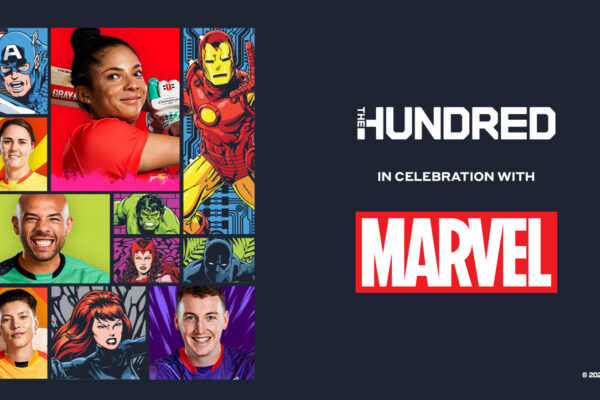In an era where sports consumption is rapidly evolving, BestSeat360 is at the forefront of redefining fan engagement. Led by CEO Liam Corkery, the company is pioneering interactive sports experiences, allowing fans to personalize their viewing with multiple camera angles, telemetry data, and immersive content. From working with Formula One and horse racing leagues worldwide to exploring opportunities in cricket and motorsports in India, BestSeat360 is set to transform how sports are experienced, especially in mobile-first markets.
In this exclusive conversation, Liam shares insights into the company’s journey, its expansion plans into India, and the future of interactive sports broadcasting.
Can you tell us more about yourself and your organization?
I’m the CEO of BestSeat360, a company that provides an interactive platform for sports fans. Our technology allows fans to switch between multiple camera angles, access telemetry and data feeds, and personalize their viewing experience. The way people consume sports content has changed drastically—fans now prefer a more interactive, mobile-friendly experience, and that’s exactly what we’re offering.
Are you currently piloting this technology with any sports organizations?
Yes, absolutely. We started in New Zealand in 2019—right before COVID, which was probably the worst time to launch a sports business! Initially, we focused on rejuvenating horse racing. Our founders come from a sports visualization background, having previously founded and exited a startup called Virtual Spectator, which was involved in yachting.
Our journey began with placing 360-degree cameras on jockeys for harness racing. From there, we built a cloud-hosted interactive player to allow fans to switch between multiple 360-camera angles in real time. We then developed a command-and-control platform to help event curators present the content in an engaging manner.
Since then, we’ve piloted projects with Formula One, worked extensively in horse racing—including the Melbourne Cup in Australia—and expanded to horse racing markets in Europe and the US. Though we are still a startup, we strongly believe our technology can enhance sports engagement while also unlocking new commercial opportunities for rights holders.
You mentioned working with Formula One. Can you share more about that experience?
We worked with Formula One in 2021 and 2022, helping curate and present their 360-degree in-car camera feeds. Unfortunately, we didn’t retain them as a client, as they later deployed their own platform. However, our work is still showcased on the F1 website with demos from the 2022 season.
Working with F1 was a learning experience. At that time, we were trying to do too much—handling the transmission of in-car feeds, which wasn’t our core expertise. Since then, we’ve refined our focus on content presentation, interactive player experiences, and curation platforms rather than transmission.
Your expertise seems to be in horse racing, but are you looking at other sports?
Yes, while horse racing is a primary focus, we are always exploring opportunities in other sports. One example is our work with the NHRA (National Hot Rod Association) in the US, where we help enhance fan engagement for drag racing.
A drag race lasts just about three seconds, but the sport has an incredible following. Fans want more than just the race—they want to see behind-the-scenes action in the pits, watch mechanics at work, and experience the tension from the owner’s perspective. Our technology brings that to life by integrating handheld wireless cameras, pit feeds, and onboard driver perspectives, giving fans a deeper connection to the sport.
Do you see potential for your technology in India’s horse racing industry?
Absolutely! The Derby experience is exhilarating, and a big part of that is what happens off the track—the fashion, the music, and the atmosphere. One of the challenges in horse racing is capturing and conveying this broader experience to remote fans, which is something we aim to solve.
We already partner with JockeyCam in the UK, which provides jockey-mounted cameras. Typically, only one jockey per race has a camera, but our vision is to have every jockey wearing a camera so fans can experience the race from the perspective of the horse they bet on. This requires bringing together multiple stakeholders—race organizers, jockeys, broadcasters, and wagering platforms—but it’s something we’re actively working towards.
Why are you looking to enter the Indian market, and what challenges do you foresee?
India is an exciting market for several reasons. Firstly, the country has an incredibly passionate sports audience, with cricket leading the way. Secondly, India is a mobile-first market, meaning fans are used to consuming content on their smartphones rather than traditional TV subscriptions, which creates huge opportunities for digital innovation.
I also have a personal connection with India—I lived there for six months in 2008 and visited frequently from 2006 to 2010. I recently reconnected with an old friend, Sri, who we’ve hired as Head of India to help us explore opportunities in the market.
The key challenge is that wagering laws in India are different, which affects our horse racing model. However, we are not limited to wagering-based monetization—we also see great potential in cricket, motorsports, and other emerging sports.
How do you plan to break into the Indian market?
Our strategy is to collaborate with Indian production companies rather than trying to operate events ourselves. In the UK, we work with JockeyCam, and in the US, we have production partners specializing in handheld and wireless camera technology. We plan to adopt a similar approach in India—partnering with production companies that understand sports broadcasting and innovation.
The ideal partners will be those who are:
- Experts in sports production, with a strong understanding of cameras, AV workflows, and cloud-based broadcasting.
- Open to pioneering new commercial models, such as premium interactive sports content.
Are there specific organizations in India you would love to work with?
We are already in discussions with a few organizations, and the response has been positive. Indian sports broadcasting has an energetic and innovative ecosystem, which is refreshing compared to some of the more rigid, legacy-driven models in other countries.
The major leagues like IPL (Indian Premier League) and MotoGP India are obviously very exciting, but beyond that, we are looking for partners who want to create immersive, interactive sports experiences.
What’s your vision for the future of sports broadcasting?
The way people consume sports is evolving rapidly. Traditional broadcasts are no longer enough, especially for younger audiences who prefer interactive, customizable experiences.
For example, my 10-year-old son in New Zealand loves rugby, but he won’t sit through a full match. Instead, he’s glued to his phone, watching short clips, interactive highlights, and first-person gaming content. That’s the future we are preparing for—wearable perspectives, interactive viewing, and deeper fan engagement.
Any final thoughts on your journey in sports tech?
We’ve built a product that we believe can revolutionize the fan experience. Interactivity is the future of sports broadcasting, and we are excited to bring that vision to India and beyond.
Thank you for having me—it’s been a pleasure discussing our journey, and I look forward to making our mark in India soon!







